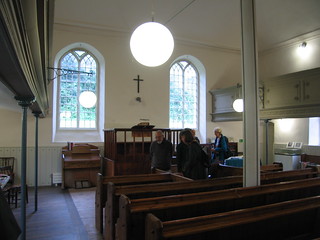Synopsis: This walk is particularly good for autumn colour. At this time of year the trees are just turning and the ferns are a mix of green, yellow and russet brown. Walk is via Fingle Bridge and Clifford Bridge.
I had decided that I would like to sample a little autumn colour today, and what better place could there be than the Teign Valley. The last time I was out this way during autumn was some time ago, and when I checked my blog (‘25 October 2008 - Walk: Drewsteignton and the Teign Valley’ [my blog post on Blogger]), I realised ten years had passed, so a return was long overdue. Next question on my mind was, can I do this by public transport? I was delighted to find that I easily could, with two bus services running a reasonably good schedule close enough to meet my needs (see details given below). With a pre-mapped walk route generated for my handheld GPS, I set my alarm for an early start (first bus from home at 07:41).

I chose to start from Castle Drogo (NT), just outside the village of Drewsteignton. I was too early to visit proper, as my bus dropped me at the bottom of Castle Drogo drive at 09:12. I had no foreknowledge of what was currently open anyway, as the property I knew to be undergoing major renovation, and I had not had the time to check the National Trust web site.

I walked up the drive and bypassed the visitor centre, and found my way into gardens. I thought I’d take a quick look around before setting off proper on my walk.

Gardens in early autumn can look a little tired after their brash heydays of summer, but I rather like the slightly muted warm colours of this time of year. I think the gardens at Castle Drogo are particularly fine in autumn. I probably shouldn’t have been there, as officially the gardens weren’t open yet, but I am at least a member. No one else was about.

On leaving the gardens I glanced over to the castle itself. Little of it can be seen, as it still remains enshrouded by an enormous amount of scaffolding and plastic cladding. Masonry litters the approach to the castle, which still looks rather sad. I wasn’t going to be able to pick up my usual path, from the spur on which the castle sits, as this was clearly an off-limits building site. Instead I back tracked a little until I came across a path into trees descending off the hillside.

I dropped down to a wide track that is signposted Castle Drogo visitors centre and gardens in the direction from which I’d come. I chose to turn right, as that generally was my chosen direction, but this probably wasn’t the best route (see further notes on a better route below). I made my way onto Hunter’s Tor, just below the promontory of the castle. From this point is one of the best views of the castle, which still looked proud and majestic despite the currently rather poor state of the property.
Hunter’s Tor is a great place on which to stand and take in the beauty of the Teign Valley into which I was about to descend. What a superb place to build a ‘castle’ it is. There are far-reaching views across the valley to Dartmoor.
From here my path descended steeply and some scrambling was necessary, and care was needed to find my way to the track which skirts the tor. This track led the short distance down to the River Teign.
The place at which this track joins the River Teign is a favourite of mine. The river widens a little here so the water flows deep, dark and gently. A shag was doing a little fishing for its breakfast upon my arrival. Walkers passed to-and-fro using the nearby footbridge. I spent a little time taking photos here, seeking out places to mount my tripod to deal with the limited amount of available light. In truth, I was a little early in the season, and the trees were only just beginning to turn. I think there will be more colour to the scene over the coming weeks, but I was well pleased with all I saw.
Having regained the track, I began my walk following the bank of the river down stream. There’s a little weir just below the footbridge, which I believe serves to deflect a flow of water to what I think was an old mill. I watched as a man stripped and entered the river for a swim. That was a little braver spirit than I could muster on this day. Probably a great experience for those hardy enough, which wasn’t me on this day.
A little further down the course of the river and I came upon the old mill I previously mentioned. There seemed to be a hum coming from this building, and I noticed that wires, carried aloft on timber posts, were leading from the building. I got the impression that electricity was being generated from within the building. Metal grids can be seen, that I should imagine protect passers-by from the machinery. A stream of water flows from the building down a little channel back into the river. Castle Drogo was an early user of electricity, and I was aware that it generated its own supply, something I’d learned whilst on a previous visit to the castle (see: ‘17 July 2011 – Trip: Castle Drogo (NT)’ [my blog post on Blogger).
See: Hydro technology used to power Castle Drogo (BBC News - 20/10/2017)
The path from here was relatively level and easy walking, simply following the bank of the river coursing down the gorge. There are a few places where the path ascends steeply, sometimes with steps and a handrail; these require a certain amount of strength and effort to negotiate. The river is never far away, gushing with quite some force in places. The colours of the leaves on trees and the ferns was just beginning to turn into autumn shades. It’s not an easy place to take photographs, as everything is enclosed within a confined space, not opening out into vistas. Sometimes it’s just best to walk and savour all that’s around you.
It wasn’t long before I was approaching Fingle Bridge. Fingle is the name of a stream that rises on Whiddon Down and joins the River Teign at Fingle Bridge. This was busy, as it’s a major entry-point into the walk that I was doing today, as there is substantial car parking available here, on both sides of the river. The land around Fingle Bridge is owned by the National Trust, who provide toilets in the car park.
This is an old family photo of ours. It shows my mother, Jean Rockett, circa 1954. I believe Fingle Bridge was a destination on coach tours at that time. My family didn’t possess a car, relying instead on coach tours for excursions. In the background can be seen an early version of the tea shack that has since become the Fingle Glen Inn. Even this is more elaborate than it originally started out, when it was opened as a tea shelter in 1907 run by Jessie Ashplant. In the late 1950s it became established as a substantial restaurant, originally called The Anglers' Rest.

This is how the establishment appears today. Refreshments are available from the picturesque Fingle Bridge Inn. There is a superb photo, c.1912, of how this originally started out as just a wooden shack serving tea and buns to be found in the book: Images of England Dartmoor, p.121, by Tom Greeves.
I crossed the bridge and began the next stage of my walk, following a trail that would take me to Clifford Bridge. After walking for 20 minutes I came upon this perfectly situated bench that was too good to pass by, so I stopped to eat my picnic lunch.
As soon as I’d eaten, I set off walking again. I was keen to make good time, as I wished, if possible, to catch an early bus back to Exeter. Public transport is fine, but it can make for a long day. The River Teign broadens out a little after Fingle Bridge, and is largely, apart from the odd white-water section, gently flowing. The walking is easy, with no really steep climbs along this section. Clifford Bridge, unlike Fingle Bridge, was a quiet spot, with not a soul about. I stopped only briefly to take this photo of the bridge and the old mill.
From here, I was to leave the river behind, and make out along a lane. After six hundred metres I picked up a broad track which is a public bridleway, clearly marked. I climbed slowly and gently, the walking being easy, although it was warm and humid in the enclosed space of this green lane, and this made it tiring. It wasn’t long before I connected with a lane, at which, turning left, would lead me into Cheriton Bishop. Checking my clock I could see that I’d made very good time. I was in fact an hour in advance of the bus I hoped to catch.
The properties on entering Cheriton Bishop have names such as Oak Cottage. It’s easy to see why, as there in the middle of the road junction grows an oak. This is perhaps the most picturesque corner of the village. The main road that runs through the village is wide, and many of the buildings are nondescript. The pub has a nice appearance, and one other building caught my eye, a rather fine toll house with, in typical style, angular walls to capture sight of anyone trying to sneak by without paying their dues.
I made for the bus shelter and checked the timetable. I was in luck, an earlier bus than that I had planned to use, would arrive in just 20 minutes. I had just time for a drink and pack away my photo equipment in my rucksack, before the bus ranged into view over the brow of the hill. Perfect! I could sit back and relax, and rest my weary legs. What a great walk it had been, and all went without hitch. I was home by 16:00. Who really needs a car?
One navigational correction for this route I would advise: On taking a clear and signed path from Castle Drogo gardens and visitor centre down the hillside, I intersected with this signed point on a wide track following the contours of the land. I chose to go right, but this sort of petered out as I approached the castle and its fenced-off renovation workings. This track route has probably fallen into disuse whilst works on Castle Drogo take place. I believe, however, with hindsight, the better course would have been to turn left at this point (‘50.69656,-3.80772’ [Ordnance Survey on Bing Maps]) and connect with the ‘Hunter’s Path’ public bridleway. Turning right on connection with Hunter’s Path would subsequently result in a reconnection with the route I had taken today, at a point just above ‘Hunter’s Tor’ (‘50.693672, -3.811378’ [Ordnance Survey on Bing Maps]).
Walk Statistics:
Total Distance: 15.21 km / 9.4 miles
Moving Time: 3hrs 56min
Stopped Time: 1hr 05min
Total Ascent: 270 metres
Maximum Elevation: 269 metres
Buses: (D, H, Dartline 173, Stagecoach 6A)
Bus out to Castle Drogo: 8:18 – 9:12 (0hrs 53mins)
Bus return from Cheriton Bishop: 14:51 – 15:25 (34mins)
Devon Day bus ticket: £9.00 (purchased on first bus of the day)


![Castle Drogo (NT) to Cheriton Bishop 034 [HDR Tone Balancer] Castle Drogo (NT) to Cheriton Bishop 034 [HDR Tone Balancer]](https://farm5.staticflickr.com/4500/37809667436_1d3c4ba6c3_m.jpg)




![Castle Drogo (NT) to Cheriton Bishop 043 [HDR Tone Balancer]](https://farm5.staticflickr.com/4503/37858278021_93d4cab8b7_n.jpg)










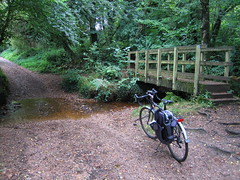

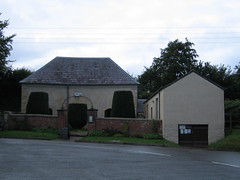



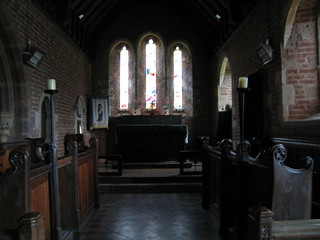

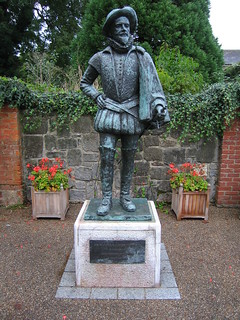
![Roger Conant (colonist) - By wagner51 (Photo by wagner51) [GFDL (http://www.gnu.org/copyleft/fdl.html), CC-BY-SA-3.0 (http://creativecommons.org/licenses/by-sa/3.0/) or CC BY 2.5 (http://creativecommons.org/licenses/by/2.5)], via Wikimedia Commons](https://upload.wikimedia.org/wikipedia/commons/thumb/7/78/Statue_of_Roger_Conant.jpg/360px-Statue_of_Roger_Conant.jpg)

